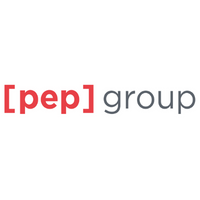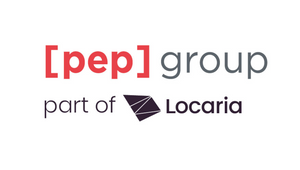
“Brands Need to Have Unified Best Practices for Production - Especially When Working With Partners”

Pepelatz Production is a proud supporter of LBB. Over the upcoming months, as part of the sponsorship of LBB’s Bossing It channel, we will be spending time with some of the personalities at the forefront of the global production industry today.
In this conversation, we speak with Joyce Chen, Facebook’s head of production, creative experiences (Creative X), about the unexpected positives that came out of the pandemic, fostering healthy collaboration, and why she wants brands to stop bargain shopping.
Q> In your experience, do you believe that brand CMOs need a better understanding of the production process?
Joyce Chen> The best brand CMOs understand how upstream production planning can elevate creative output. In my time at Facebook I’ve been lucky enough to work with CMOs like Antonio Lucio and Alex Schultz who have welcomed and championed production as partners. They have invited Creative X and our production team to help drive programs and processes across the family of apps because they understand the “how” is just as important as the “what.” Because of this foresight, production has been able to nurture healthy partnerships where creativity can thrive based on shared values, mutual respect and collaboration.
I’ve witnessed firsthand the impact of our visionary CMOs championing diversity in front of and behind the camera and putting our money where our mouth is when it comes to production. We’ve invested in the right partnerships and pushed for systemic, holistic protocols and goals across our entire marketing pipeline. As a result our marketers have spent spent over $24M in diverse agency and production suppliers in the first half of 2021 alone (as part of Facebook’s overall initiative to spend $1B in diverse suppliers in 2021), we’ve grown and nurtured a production assistant workforce pipeline program, and we’ve awarded over 50% of our 2020 and 2021 productions to directors who identify as women.
Because our leadership understands the role of production in impacting the creative supply chain, and the role of how media shapes unconscious bias, I’m proud to say that our work is intentionally and thoughtfully made, and truly reflects the diverse tapestry of the 2.7 billion people using our platforms.
Q> In terms of the pandemic, do you think it is going to lead to a permanent revolution in remote shooting?
Joyce> I think some aspects of remote shooting may have actually helped the creative process. In the earlier times of COVID, we experimented with a lot of new methodologies and took a lot of chances. There are some approaches we’ll definitely repeat and continue to evolve. This includes practices like briefing a range of DPs and directors (under one production company) to shoot unsupervised, which yielded a wider range of perspectives and elevated creative output.
We’ve utilised more handheld, self shot footage, existing sets, props and wardrobe than we ever have in the past. This really aids with authenticity for brands like Facebook - where much of our marketing channels feature real users and their stories. I imagine things like this will continue beyond the pandemic and continue to contribute to great work being made in a smarter and more authentic way that resonates with our audiences.
Q> Do you think the pandemic has made people look at the way we do things in a different way? Has there been any change?
Joyce> I think there is less preciousness and rigidity in oversight of the process. I like to think that trust has always been there, but I appreciate the flexibility and trust I’m witnessing between brands, agencies and production partners as we navigate this pandemic together. I’ve seen more transparency in planning, open and accountable conversations, and less compartmentalised ways of working. It’s more clear than ever that we all have the same goals and are working together to achieve them.
Q> The industry is reshaping with both brands and agencies in-housing at the same time. What do you think that means for the business?
Joyce> In my opinion, agencies are crucial partners in the creative process, and they aren't going anywhere. How brands work with internal/external agencies just depends on how they plan to leverage internal and external perspectives to best serve their business needs. I really believe there are things external agencies can do better because of their global scale, creative excellence, and because they bring outside perspectives which are needed and wanted. There are also things that internal teams tend to do better, like innovate how we market in our products, drive east west alignment on complex projects, and push creativity in ever evolving formats like on platform ad surfaces. I’m speaking in generalities, and I’m sure it’s different for every brand, but I do think there are inherent internal/external advantages that can be leveraged depending on what brands need to accomplish.
Another note I’d add is that as someone on the brand side, I’ve learned that if you hire an agency, whether it’s in-house or external, you must give them a clear scope and trust them to do the job you hired them to do. If you’re working with internal and external agencies at the same time, clear briefs, roles and responsibilities are the most important thing, and then the focus should be on fostering healthy collaboration between teams so the work can stand together.
Q> What do you think this means for production?
Joyce> With internal and external agency agencies sharing large bodies of work for the same brands, I think it’s more important than ever for brands to have unified best practices for production so they show up in the marketplace as one voice. This can help partners who consistently work for the brand (even if for different agencies or sub brands) build realistic schedules and budgets because they know how to work with us - this could be knowledge of our onboarding processes, privacy compliance, our in front of and behind the camera guidelines for diversity and inclusion, payment terms, etc. They are better partners when they know how to work with us and can plan accordingly - it just streamlines the process.
I also think that if brands are helping to drive social impact through the ways we work (things like sustainability D&I in the industry, etc) that the more agencies that participate, the more powerful that work will become when aggregated.
As the shared work between agencies continues to grow, I have to say I’m not a big fan of cost consultant type methodologies like driving the lowest cost across bidders. Making great creative work does not happen when you treat the process as if you’re bargain shopping. When you work with creative talent, internal or external, you are bringing them on for a reason. If you want award winning and effective work, it’s important to invest in creativity with the right amount of time (planning), money (fair budgets) and respect (partnership). And when I talk about budgets, it should be a fair cost, but not necessarily the lowest cost, which is when creativity can suffer. We have a saying here that “what you appreciate appreciates” (from the book “The Soul of Money” by Lynn Twist). I really believe in that.
Q> And when it comes to assets, how important is it for a brand to hold their own production masters and library of assets?
Joyce> I appreciate when brands work smart, and having a highly searchable Data Asset Management system with AI tracking makes a lot of sense when there is a high volume of production. It can be dry work (appreciating my internal team right now… shout out to Chris Romano… haha) but very worthwhile.
Q> Do you think there's any loss of continuity with the amount of content brands are creating now?
Joyce> It depends on the brand and how much attention they pay to quality control and brand stewardship. Clear creative vision, production best practices, design systems and deep brand stewardship really go a long way, which is why we invest in those things here at Facebook.
Q> What are your predictions for the next five years in the production environment?
Joyce> I love seeing the diversity in production continue to expand. In the last one to two years we have been bidding and awarding to so many directors I’ve never heard of which has been so energising.
There is so much more space for different voices and experience levels. During the last two years we’ve seen majority female crews, something that I never saw in my time on the ground as a producer. We’re pushing on more diversity throughout the entire pipeline from DPs to colourists and mixers. We’re investing in diverse workforce programs and powerful, game changing initiatives like #doubletheline and Green the Bid. I welcome this change and imagine that rosters and the industry will continue to grow and allow for more space for new voices to come in.
While new short form surfaces evolve (like moving posters and instant experiences), I also think there is going to be a trend of returning to more long form. As targeting becomes more and more precise, audiences are going to be looking to dive deep with their favorite brands, interests and influencers, and I look forward to more long form storytelling.












